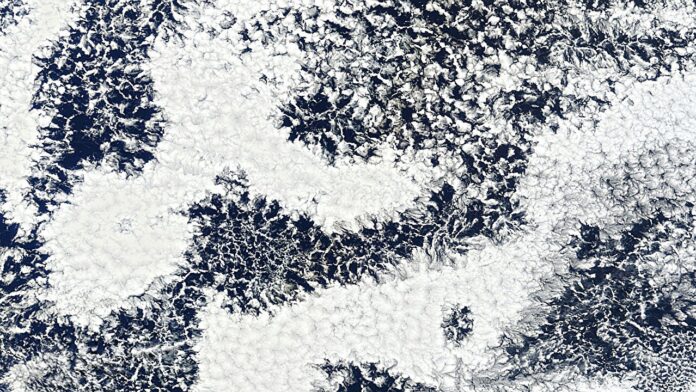Accurate climate modeling hinges on understanding clouds – their size, shape, and how they interact with sunlight and precipitation. One crucial piece of this puzzle is cloud droplet microphysics, the intricate dance of water droplets within a cloud. Recent research highlights a glaring gap in our models’ ability to capture this complexity, potentially impacting our predictions about Earth’s climate.
Our current climate models struggle to accurately represent the diversity of cloud droplet sizes within clouds. Nithin Allwayin and his team found that even sophisticated simulations, known as large-eddy simulations (LES), paint an overly uniform picture of droplet distribution. Think of it like mistaking a bustling city for an empty field – the overall view is drastically different from reality.
These findings stem from comparing LES data with real-world observations gathered in stratocumulus clouds, a common type found along coastlines and often appearing as low, gray patches. The researchers focused on how droplet size varies across different parts of a cloud. The new observation data revealed distinct patterns – some areas boasted large droplets while others had smaller ones, indicating a more dynamic internal structure.
This is where the models fall short. While LES simulations did capture some interesting correlations between droplet sizes and broader cloud phenomena (like drizzle formation and updrafts), they failed to mirror the observed diversity across larger scales within the clouds.
These discrepancies might stem from several factors. For example, current models may not accurately depict “entrainment,” the process where drier air mixes into a cloud, causing evaporation and influencing droplet sizes. Another culprit could be the assumption that factors like surface conditions and aerosol types are evenly distributed across entire clouds – which is rarely the case in nature.
Improving our understanding of these microphysical processes is vital for refining climate models. Allwayin and his team emphasize that their LES simulations were simplified scenarios, so caution is needed when applying them directly to real-world complexities. They urge future research to explore how variations in aerosol concentrations across clouds influence droplet sizes and to refine model techniques for representing entrainment more realistically. They believe Lagrangian schemes, which track individual particles within the cloud instead of averaging properties over large volumes, hold promise for capturing these nuances.
Ultimately, achieving a more accurate picture of cloud microphysics will be crucial for improving our understanding of how clouds contribute to Earth’s climate system and ultimately, predicting future changes in global weather patterns.









































